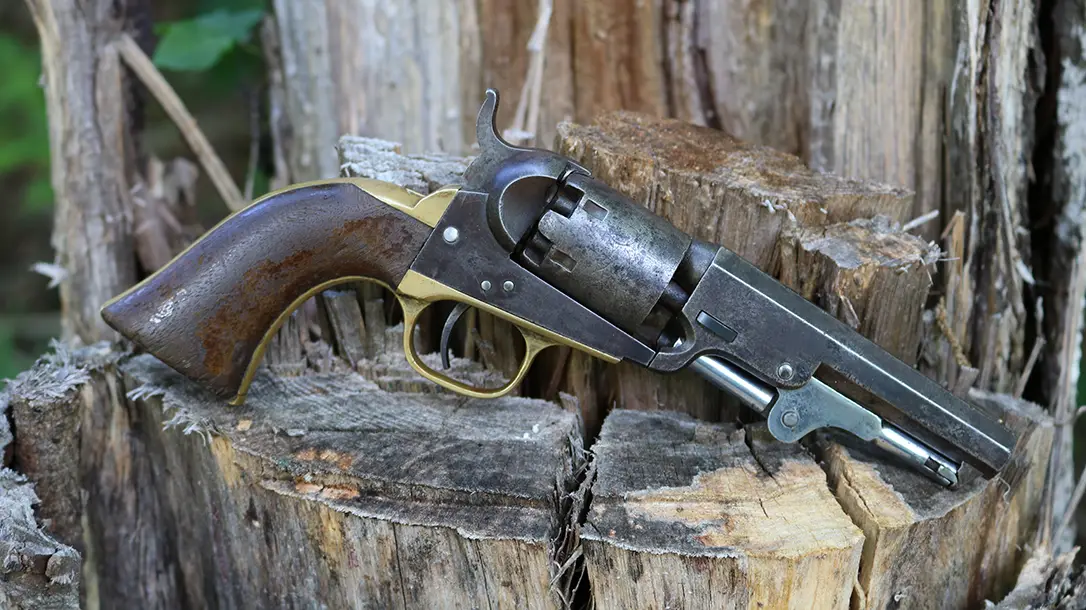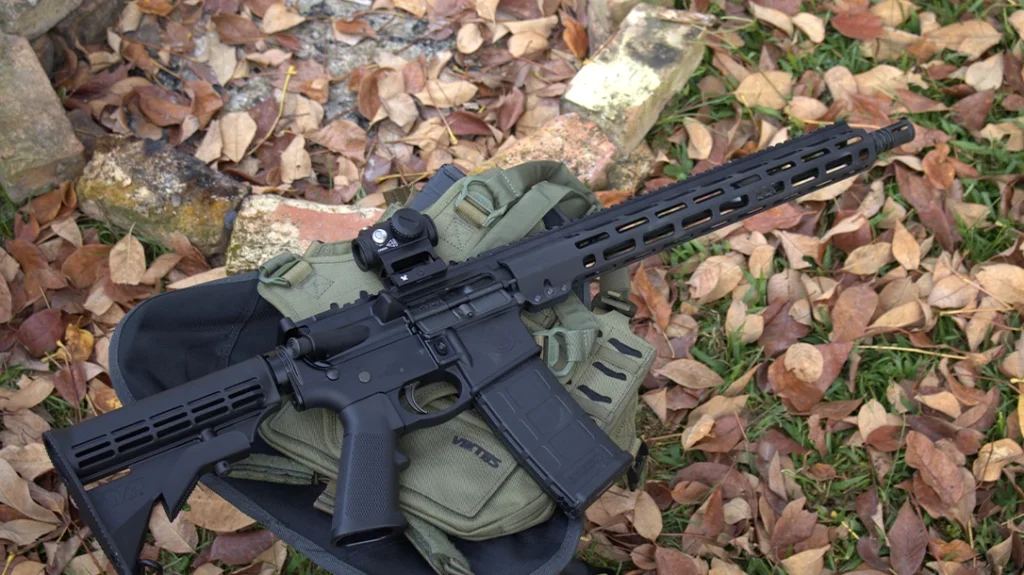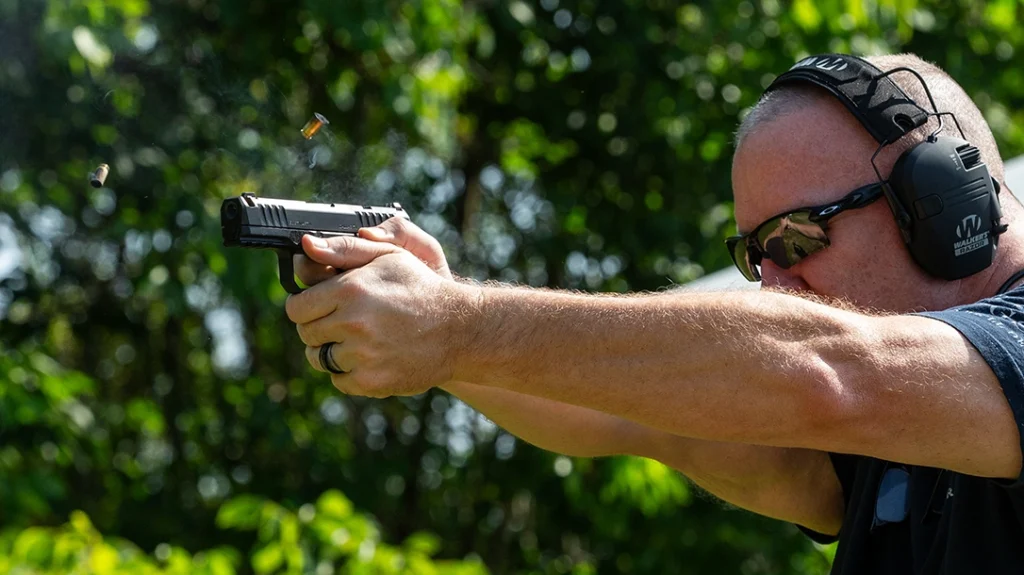Anton Cervis was a small man with big dreams. He lived in abject poverty in Miskolc, Hungary, with his wife and one child, a son. When news arrived of gold to be found on the other side of the world in California, Anton and his brother-in-law Frigyes struck out. The trip and the gear took everything they owned. Anton stood just five feet two but was well accustomed to work. Their gear was simple, but it was all they could afford. Unscrupulous merchants charged inflated prices for tools, food, and supplies. Among their meager necessities, the two men had purchased a muzzleloading 12-gauge shotgun and a Colt 1849 .31-caliber pistol. At age 32, Anton was a man of experience. Whatever they found, they had best be prepared to defend. The Colt 1849 Pocket Pistol would be a good choice for that.

The Days of the Gold Rush were Dangerous
The year was 1850, and after long months of toil, the two men finally had something to show for their efforts. They drew straws. Frigyes would stay and mind the claim. To abandon it even for a day was to risk its loss. Anton would take their accumulated poke of nuggets and dust into town for deposit at the bank. He was both anxious and excited. This was his first step toward reuniting his family.
Advertisement — Continue Reading Below
The town had exploded from nothing and was a frenetic hive of activity. Prospectors, entrepreneurs, opportunists, and ne’er-do-wells all milled about looking to turn an easy buck. There was the bank, a saloon, a livery stable, a hotel, a pair of competing churches, and three markedly better-attended brothels. By the time Anton rode into town, the bank was closed. He secured a room and retired to the saloon for his first drink in two months that hadn’t come from a creek.

Trouble in the Bar
The beer was warm but delicious. He kept to himself in the corner but soon gained the attention of an enormous hirsute man in tattered buckskin. The ill-kempt brute staggered over and sat at the small table opposite him. His speech was slurred by drink and meanness, and the big man said, “I think you struck it rich, little man. Let’s see your poke.”
Advertisement — Continue Reading Below
Anton grew uncomfortable. He had more than a pound of gold in a leather pouch tucked inside his belt, and he had no interest in engaging this ruffian. Anton tried to excuse himself in broken English, but this only infuriated the brigand. Before Anton could reach the door, the big man grasped his shirt and spun around, pressing him against the wall. One enormous hairy arm pinned the small man in place while the other produced a gigantic Bowie knife. “I said I’ll be looking at your poke, little mouse,” the man said, this time with resolve. “Don’t make this nasty.”

No Help Coming
The crowd grew quiet, but no one moved to intervene. Anton was a stranger, and this man was a most impressive specimen. Nobody was going to risk a beating or worse to help him. Anton’s gut churned as he saw all his work and dreams suddenly evaporating. That gold was the key to getting his family back, and now this brutish man was trying to take it. The big man leaned close, his teeth brown from years of tobacco and profanity, and sneered. Suddenly, the big man’s eyes widened, and he leaned back involuntarily. As he did so, the patrons of the bar could see the compact pistol now shoved firmly underneath his chin. The four distinct clicks that a Colt revolver makes when it is cocked melded together into one as Anton thumbed back the hammer.
Advertisement — Continue Reading Below
With a voice as steady as the grave, Anton explained that the big man would leave. Anton’s dark eyes resembled those of Death itself. The bully did not care enough for Anton’s gold to die for it that night, so he raised his hands and stumbled through the front door. Anton’s little pistol tracked him as he departed. The saloon suddenly burst back to life. Men he didn’t know slapped Anton on the back and bought him drinks. The small Hungarian slept lightly that evening, but he was present when the bank opened to have his poke assayed and placed on deposit. Three months later, his wife and son arrived by steamship.

Saved by The Colt 1849 Pocket Pistol
Anton and Frigyes used their gold to open a store selling supplies. They caught the wave’s crest and made markedly more money supplying miners than they ever might have made mining themselves. Their little store expanded to become a chain that eventually made Anton’s son extremely wealthy. All of it, however, had turned on one tense moment in a greasy California saloon between an inveterate bully and a small, determined man with a gun.
Advertisement — Continue Reading Below
Samuel Colt
Samuel Colt earned his first patent for a Colt firearm in 1836. Colonel Colt was an equal parts inventor, marketer, and showman. Along the way, he changed life on the American frontier. The timeless axiom was, “God made men, but Sam Colt made them equal.” It is the firearm that makes the weakest, most petite woman the physical equal of the largest, vile, brutish man. That was true in 1850, and it remains true today. In the Colt 1849 revolver, we see the archetypal frontier equalizer.
Sam Colt was a bit of a pyromaniac. He entertained his schoolmates when young by detonating gunpowder charges in a local lake using a homebuilt galvanic cell. He was sent away to learn the seaman’s trade when he accidentally set fire to his boarding school. While sailing out of Calcutta, Colt was inspired by the ship’s capstan to imagine a pistol with a rotating, indexing cylinder that might allow multiple shots. When they reached their home port, he had crafted a working model out of wood. Though others had proposed flintlock revolvers in the past, Sam Colt perfected the idea. He also pioneered the concept of interchangeable parts and the assembly line. At the time of his untimely Death at age 47, Sam Colt was one of the wealthiest men in America.
War with Mexico
Sam Colt’s initial two business ventures were underwhelming. He first attempted to produce firearms in Paterson, New Jersey and then tried his hand at building sea mines. Both of these enterprises ended in failure. However, in 1847, the Texas Rangers ordered 1,000 Colt revolvers for the war with Mexico. This put Colt’s guns on the map. Driven by some inspired marketing, the Colt pistol became an integral part of the American West. Momentum from those heady days still sells Colt handguns even today.
Advertisement — Continue Reading Below
Those early Colt revolvers came in three broad flavors. The first Colt Walkers produced in 1847 were .44-caliber beasts built to the specifications of Captain Samuel Hamilton Walker. These big guns weighed 4.5 pounds and tipped the balance of power in favor of the Texas Rangers during many an Old West gunfight. Captain Walker died violently bearing a brace of his eponymous pistols shortly after having received them. The Colt Walker is the official Texas state pistol today.

Colt Revolving Belt Pistol
The .36-caliber 1851 Colt Navy revolver was the definitive early cap-and-ball Colt. The gun was also called the Colt Revolving Belt Pistol of Naval Caliber. Cylinders on original 1851 pistols sported an engraved depiction of the Second Texas Navy in action during the 1843 Battle of Campeche. The Navy reference was predominantly a marketing tool. Most 1851 pistols were sold to the Army and civilians. Wild Bill Hickok, Doc Holliday, Buffalo Bill, Ned Kelly, Robert E. Lee, Nathan Bedford Forrest, and US Grant were enthusiastic users.
Advertisement — Continue Reading Below
The Colt Pocket Model 1849 was a miniaturized .31-caliber version of the basic Colt action. Featuring barrels between three and six inches, it was designed for situations like Anton Cervis’s. Depending on the specific model, the gun carried either five or six shots and pushed a 50-grain lead ball to around 750 feet per second.
The Colt 1849 Pocket Pistol – Old West Concealed Carry
The 1849 Pocket Model featured a brass frame, trigger guard, and a latched loading lever. One common but potentially apocryphal application was that Civil War officers purportedly kept the little guns handy to dissuade their Army surgeons from removing limbs unnecessarily. Considering some 60,000 Civil War veterans lost an arm or leg, this is likely not an unjustified concern. The Pocket Model is smaller than it appears in photographs. The trigger guard is slightly oversized to accept a normal finger, but the grip is a bit petite for most folks. However, this made the gun concealable, and that was the point.
We lamentably live in a fallen world. Then as now, there remains a niche for a compact yet effective handgun to serve as the great equalizer. Sam Colt saw a need and filled it. In so doing, he blazed a trail across the untamed West and ultimately into modern-day America. Today’s American rugged individualists who choose to avail themselves of concealed carry arms hearken all the way back to those heady days.
Advertisement — Continue Reading Below
Technical Specifications
Colt 1849 Pocket Model
Caliber .31
Advertisement — Continue Reading Below
Weight 26 ounces
Overall Length 9 inches
Barrel Length 4 inches
Capacity Six Rounds
Total Production 325,000
For more information, visit: https://www.colt.com/























